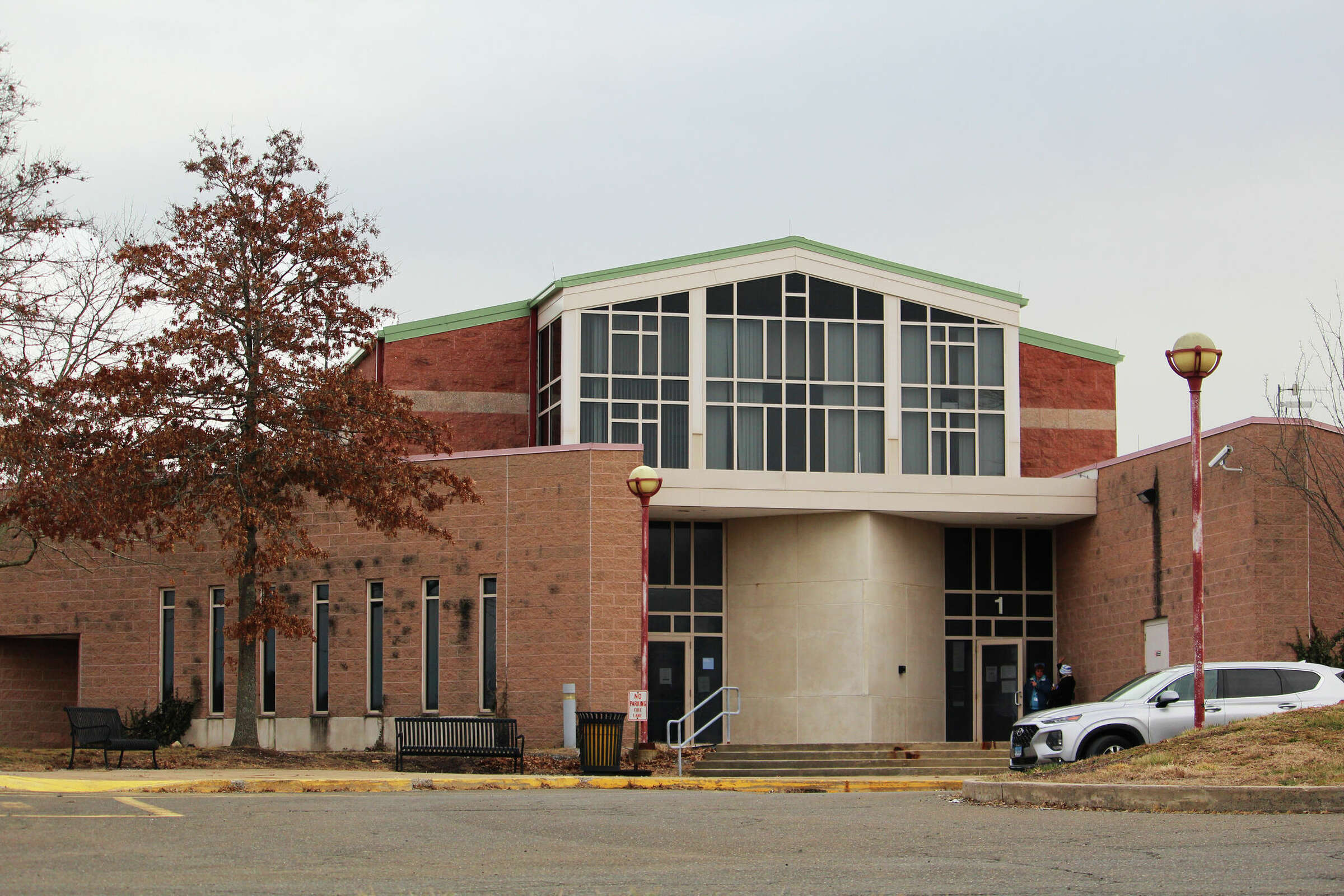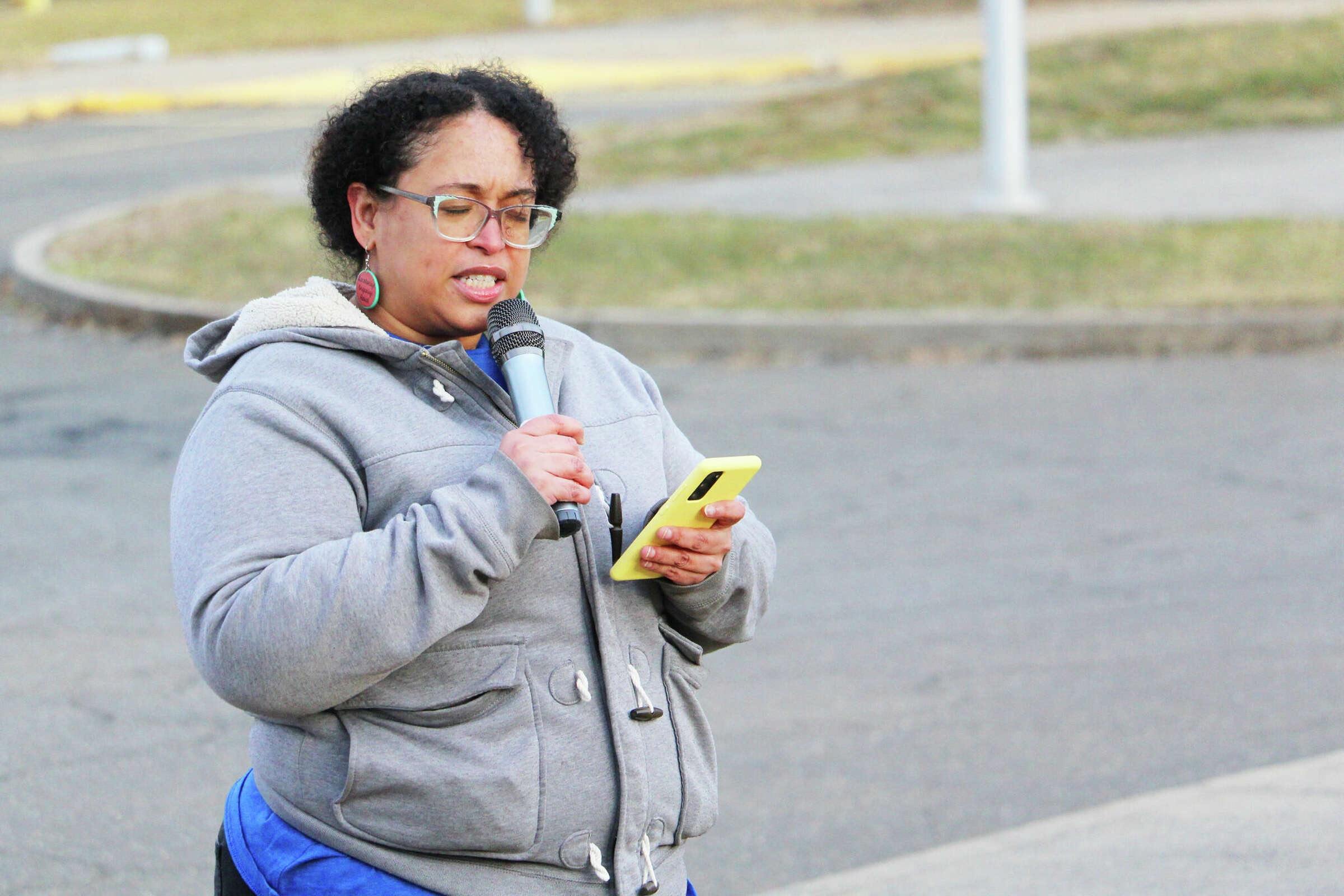
The remains of the Connecticut Juvenile Training School (CJTS), a jarring ring of six cement and brick buildings, lie among the rows of pale yellow and blue houses situated along Middletown’s Silver Street. Accounts of inhumane use of solitary confinement and chemical agents on juvenile offenders, untrained staff, and corruption all contributed to the closing of the facility within fifteen years of its opening in 2001—even after massive gubernatorial effort and a whopping $57 million spent on construction.
Capital Preparatory Charter Schools issued a proposal at the end of 2022 to turn the site of CJTS into one of its new schools, sparking controversy in the Middletown community.
The CJTS campus serves as a morbid monument to Middletown’s poorly-buried history of mismanaged detention centers, asylums, and psychiatric hospitals. However, this proposed use of the land has amplified the mistreatment of juvenile offenders and those with mental illness throughout the past 400 years of Middletown’s history. At the forefront of this resurgent controversy are the now-diminished hopes of Capital Prep to use the facility for its new campus.
Initially, CJTS was constructed to replace the Long Lane School (previously known as the Connecticut Industrial School for Friendless Girls), a carceral institution established on June 20, 1869, that was dedicated to “remaking wayward girls.”
To better understand the present turmoil surrounding CJTS, we must first delve into Middletown’s history of juvenile incarceration, beginning with the Long Lane School in the second half of the 19th century, moving to the financial corruption relating to the construction of CJTS, and finally to the the current outcry about the Capital Preparatory proposal.
The Long Lane School (1869 – 1998)

“The proper subjects are not merely paupers, nor orphans, nor confirmed thieves, nor prostitutes, nor other criminals, but viciously inclined girls between the ages of 8 to 16 years old,” the Connecticut Industrial School for Friendless Girls 1893 annual report stated about its residents.
Even after the institution’s renaming and operational change in 1917, Long Lane girls continued to be jailed for premarital sex, learning disabilities, and parental neglect well into the 2oth century.
“Not many of the girls at Long Lane were actually…criminals, but they were treated that way,” a previous CJTS administrator who wished to remain anonymous said.
On September 26, 1998, fifteen-year-old Tabatha Ann Brendle hanged herself in her Long Lane cell with a window blind cord shortly before she was meant to be transferred to a more secure part of the facility. Her previous suicide attempts should have put Long Lane staff on higher alert. However, Brendle was left unsupervised and alone for five hours before her death.
Long Lane School closed shortly after the tragedy, and the University acquired its land in 2000.
“When I was a Wesleyan student, I associated Long Lane with the farm,” Middletown Mayor Ben Florsheim ’14 said. “Not everyone knew about the school and its history.”
Brendle’s death turned out to be a well-timed misfortune for government profiteers. In 1998, William A. Tomasso and Peter N. Ellef served as chiefs of staff to Connecticut Governor John G. Rowland. With their political power, these two men participated in bid rigging (slating Tomasso’s company to lead in the construction of CJTS without fair bidding) in an attempt to profit off of the tragedy.
After a walk-through of Long Lane School, the Rowland administration illegally partnered with the Tomasso Group in a no-bid construction contract. During the election campaign immediately following Tabatha’s death, Rowland insisted that renovating Long Lane and building a replacement juvenile prison was of the utmost importance. TBI Construction Co (owned by the Tomasso Group) was issued a prompt transfer of $51.2 million in state money to start building as soon as possible. The no-bid contract and eager reconstruction were suspicious.
The Department for Children and Families (DCF) had previously declared multiple state emergencies with no effect, but Tabatha’s death attracted an immense amount of attention, and the reconstruction of Long Lane was placed on the top of the state’s (more specifically, Governor Rowland’s) priority list. Besides the rigged multimillion dollar contracts, government money was also funneled into Ellef’s son’s landscaping company, LF Designs, as a way to transfer money from Tomasso to Ellef. Charges of bribery and tax fraud soon fell on Governor Rowland, the Tomasso Group, and other key players.
Two other Rowland administrators, Lawrence Alibozek and Kristine Ragaglia, admitted to Tomasso financing their year-long affair, paying for luxury vacations, expensive dinners, and five-star hotels. Alibozek even took to burying pure gold bars in the backyard of his New Hartford home and collecting cash-filled envelopes from Tomasso as the criminal activity continued.
“An important space like a juvenile detention center was left to corrupt politicians and CEOs,” the CJTS employee continued. “The construction should not have been a business arrangement.”
In fact, Wesleyan’s eventual purchase of Long Lane at the turn of the century inadvertently funded the construction of the Connecticut Juvenile Training School, as the state directed money from the purchase to the project.
The Connecticut Juvenile Training School (2001 – 2018)
All boys aged from 12 to 20 previously housed in Long Lane School were promptly moved to CJTS following the prison’s opening on August 28, 2001. Within two months, the Connecticut Office of the Child Advocate (located on Asylum Avenue in the Asylum Hills of Hartford, strangely enough) received numerous complaints about the management of the facility from inmates. The DCF intended the facility as a place to treat juvenile offenders, rather than simply imprisoning them—yet it took only a few months for this mission to vaporize. The Connecticut Attorney General and the Office of the Child Advocate began an investigation in November 2001, and published a report on September 19, 2002.
“There were all sorts of problems with how the Department of Children and Families was being run at that time,” Florsheim said. “It was in the midst of a kickback scandal with the governor, who would eventually go to federal prison related to CJTS…. This was hot news, and stupid decisions were being made. This prison was one of them.”
The 2002 report elaborates on the initial failures of the DCF in overseeing CJTS.
“DCF failed to properly plan for CJTS, failed to take proper steps to effectuate the opening of CJTS, and failed to properly oversee the quality of services at CJTS, including education, safety and other services,” the report states.
This document also confirms that Tabatha Brendle’s death was a “catalyst” for the construction of the Connecticut Juvenile Training School.

The report is divided into multiple sections, addressing the lack of suicide prevention programs or modes of action within the prison, excessive use of restraints and seclusion, a lack of an adequate behavior modification system, and staff overtime and morale issues.
Though only one instance of inmate suicide occurred at Long Lane, the Department of Children and Families’ sole purpose for constructing the Connecticut Juvenile Training School was to ensure that there were proper preventative measures put in place for suicidal inmates. However, the proposed “safety watches” were not performed as promised, according to the report.
“Children on safety watches at CJTS are not properly monitored,” the report states. “There are examples of children on 1:1 safety watches [continuous monitoring]…for which there have been gaps in monitoring up to hours at a time.”
One child was left unsupervised and injured themselves during the safety watch, an instance confirmed by CJTS security camera footage. Additionally, much of the documentation of these safety watches is inconsistent, incomplete, or missing altogether. The report then claims that CJTS direct care staff received a substandard amount of training in assessing the risk of suicide and in preventing it. Another source of concern lay in the overuse of restraints on inmates.
“[Restraints are intended] only to be used when necessary to protect youth from injury to themselves or from injuring others,” the report states. “Restraints are specifically not to be used for punishment, for convenience or as a substitute to programming.”
In one reported instance, CJTS Superintendent Lesley Mara directed staff to restrain an inmate who threatened to set off the facility sprinkler system (even though they did not act on this statement). Another case saw a 15-year-old offender in restraints for five continuous days. The actual frequency of inmate restraint was severely underreported, so an accurate picture cannot be established here.
The third group of complaints concerned the excessive and diverse uses of solitary confinement. Inmates were regularly locked into their rooms after classes, and during shift changes, treatment meetings, morning and evening hygiene and shower periods. These seclusions routinely lasted for over one hour each day. In addition to solitary confinement, pepper spray was also reported as over-utilized on juvenile inmates.
“[Pepper spray’s] use has been shunned by juvenile correctional agencies because of the harm it causes to youth and the negative impact on staff-youth relationships, the key to successful juvenile rehabilitative programming,” the report found. “Very few states authorize its use [in juvenile correctional programs] and in the states that allow its use in policy, most prohibit the use except as a last resort and with many conditions and few facilities put it into practice.”
Facility programming was a large issue: because most children placed in custody had their education disrupted and could not read or write at their own grade level, basic education was essential. However, items like desks and chairs, books, and other supplies were not available for a large period of time, and computers were faulty and not generally available to students. Teachers at the facility were few and far between. Uncertified administrators made educational decisions for students about curricula and other services, and they prioritized behavioral modification over academic learning. Evan Okun ’13, a former volunteer instructor at CJTS, shared his perspective on the academic and arts curriculum and offerings.
“Early in my sophomore year at Wesleyan, I began volunteering with CJTS’s music therapy department,” Okun said. “I went to the facility twice weekly to write poetry and music with young people who were locked up. The next year, I designed and implemented a semester-long curriculum at CJTS that explored literary techniques and societal inequality through hip-hop. I formed relationships there that I continue to this day, over ten years later.”
Okun sees no difference between how CJTS operated compared to other detention centers.
“Prisons do not work,” Okun said. “They are violent and horrific institutions…. Our society is addicted to incarceration and terrified to pursue any alternatives. If this level of failure was in any other sector, it would be inexcusable. The issue is, it works well for those in power.”
After a disproportionately large number of complaints and negative media attention, CJTS was finally closed in 2018 by Connecticut Governor Dannel P. Malloy. The multimillion dollar state project was labeled a short-lived “costly relic of the Rowland era.” A failed attempt to rectify the state-wide justice system, CJTS is yet another mismanaged facility that Middletown can add to the list.
“CJTS closing was a joyous event,” Assistant Director of the Jewett Center of Community Partnerships Diana Martinez said. “What were we going to do with this prison after it closed, was the next important question.”
The Present: Capital Preparatory Charter Schools, Kamala Harris, and an Uncertain Future
After proposals ranging from a rehabilitation center to another prison, CJTS’s campus came to the attention of national leaders.
“A couple of years ago, shortly after [President Joe] Biden took office, [Governor] Lamont got a call from [Vice President] Kamala Harris about CJTS,” Florsheim recounted. “We, as the city, found out that [Lamont] offered up CJTS as a place to house migrant children.”
The Biden administration was searching for sites to house some of the nearly 19,000 undocumented children separated from their parents at the border, and believed that CJTS provided a good location. The building had all of the amenities required to operate an adequate housing system.
During her 2021 visit to New Haven, Harris spoke to Lamont about the potential use of CJTS, “seriously considering” it as a viable option to house migrant children.
“This idea was met with a lot of alarm from the advocacy community that was pushing for the closure of the facility,” Florsheim said. “Because, first of all, it seemed like a bad idea…. I don’t think anybody felt that housing, or jailing, migrant kids was a good use of the CJTS campus.”
Malloy, who closed CJTS, stated to the press that he never could have imagined it being used again to hold juveniles. Advocacy groups labeled this idea as a “huge step backward,” and as a “warehousing of children in cages.”
The plan eventually fell through in April 2021 due to the media storm. However, this was not the last time the CJTS campus would be considered for a controversial use. Next, a proposal to establish a charter school within the prison walls was brought forward.
The proposal from Capital Preparatory Schools to use the space originated in late 2022. Capital Prep is a network of public charter schools with the mission to “provide historically disadvantaged students with the college and career readiness skills needed to become responsible and engaged citizens for social justice.” A location in Middletown was initially well-received.
While that sounded promising for Middletown students, some argued that founding a publicly funded charter school would create an imbalanced school system.
“Capital Prep would fail students just as much as Middletown Public Schools,” said Martinez. “First off, this school would not accept all kids of color. There are those who are kicked back. They would have to sit in the same system [where] other students have issues with fewer resources and support in a two-peered schooling system.… There is no benefit to having Capital Prep in our neighborhood.”
On the other hand, many Middletown residents were in favor of Capital Prep. The network of schools has historically supported communities and children of color.
Contention about Capital Prep, however, was chiefly based on the proposed location: the former campus of CJTS. Within the application for the charter, Capital Prep only intended to execute slight modifications to the CJTS campus. The initial prison-like structure of the facility would remain.
“I don’t know that there were any high-level conversations between [the] state government and Capital Prep about whether the site was available,” Florsheim said. “The state government, for better or for worse…keeps their cards close to their chest when it comes to control of their properties. They own most of what’s up there on the hill. And again, many of those buildings are empty, decaying buildings.”
What remains of the CJTS campus are prison pods and a design inspired by Marion Juvenile Correction Center in Marion, Ohio, visited by state officials after Tabatha Brendle’s death.
“These kids would be going to school in jail cells,” Florsheim said. “We do not want to see…kids learning math in prison.”
In the weeks immediately following the proposal, there was no formal announcement about the possibility of bringing Capital Prep to Middletown or the proposed location, according to Martinez. Residents found out about the plan mere weeks before the vote to approve Capital Prep’s charter. The application was submitted in December 2022. The hearing was held a little over a week before the March 1 vote.
“Capital Prep wrote up a 500-page document proposal within the least effective timeline,” Martinez said. “Their plan was to have between 800-1100 students at a facility that was designed for 225, which the DCF backed.”
A Wesleyan student petition circulated around campus against the establishment of a Capital Prep school on the CJTS campus. Within a few days, the Wesleyan community contributed 80 signatures.
“[The CJTS campus] must not be used to further surveil, confine and oppress Black and brown young people,” the Wesleyan petition stated. “CJTS’ legacy of racial discrimination that follows children into their adult lives will only be perpetuated by this proposed charter school… The CJTS grounds have been soaked in the blood of Black and brown children. Rather than reopening sites of incarceration and criminalizing children, we should be investing in education and our communities to provide young people with real opportunity.”

Middletown residents and local stakeholders did not have a formal say in the approval until the heavily-delayed public hearing held on February 15. Separately, educators, activists, students, and parents gathered in front of the prison to speak against Capital Prep’s proposal. Serena Murdoch ’25 and other University representatives also attended the gathering.
“These [CJTS] buildings have played a lot of roles: to surveil, to oppress, to isolate, to scare,” Murdoch said in her speech. “We’re here to demand that CJTS be completely demolished. As long as the building exists, there is a risk of it being reopened to further oppress children, especially Black and brown children. This is a site of trauma, and needs to be closed for good.”
The police eventually arrived on the scene of the protest, where activists were standing and speaking peacefully on public property. And while this outcry from the public did, ultimately, cause Capital Prep to withdraw their proposal, many Middletown and Wesleyan University community members want to see the buildings completely destroyed.
As long as the CJTS buildings are still standing, young children can roam the halls that were, just years before, sites of torture and injustice for kids their age. While local activists and nonprofits like the Katal Center for Equity, Health, and Justice are currently working to dismantle CJTS and similar institutions in Connecticut, the fate of the CJTS campus is still undecided.
“We do not want to see that site have anything on it ever again,” Florsheim said. “There’s been a long-standing tension that exists between the community of Middletown and the [Connecticut Valley Hospital] up on the hill…. It really is a testament to how poorly people who have mental illnesses have been treated for generations and generations.”
Carolyn Neugarten can be reached at cneugarten@wesleyan.edu.


Leave a Reply